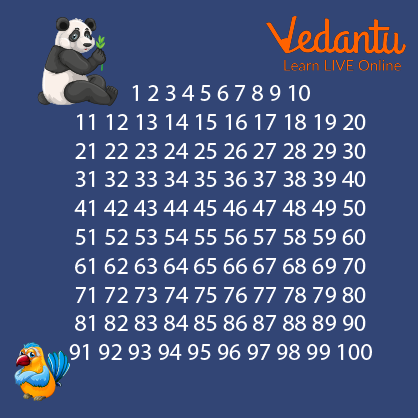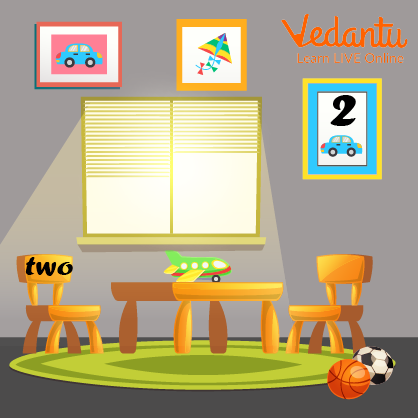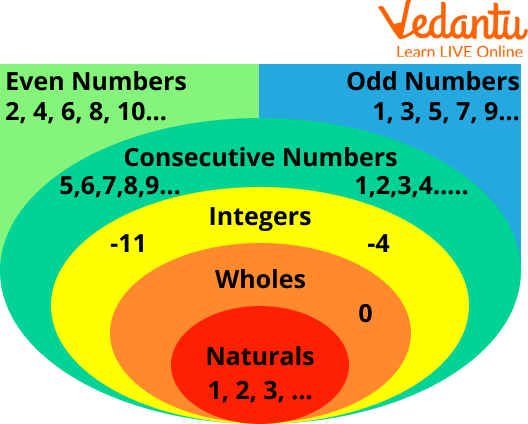




What is the Hidden Number?
A hidden number game is a lighthearted game that challenges your capacity to locate numbers within a context to help kids with their number sense. Finding lists of numbers within an unscrambled set of numbers scenario is a requirement for all hidden number games.
In the number games, we have to locate the precise number that is concealed in the table of numbers. Children must attentively read the question before locating the precise number from the number table and completing the blanks. Colour the number in the table red to indicate that it has been utilised. Let’s understand “what a hidden number is” in detail.
Use of Hidden Numbers
For children to comprehend the sides, above, and below, the number table is quite helpful. Children can use this worksheet on number games to practise their understanding of the right side, left side, over, and below in actual situations. Take a printout of the number table, then have some time doing this worksheet. Now, it is clear what a hidden number is.
Hidden Number Games
Children can observe how one is done for them to obtain a clear picture of what to do, for instance, and then follow the number table chart's instructions for colouring that number.
1) To identify the hidden number, read the following and highlight it in red in the number table below:

Hidden Number Games
(a) above 55 45 (m) left of 69 68
(b) left of 53 52 (n) below 48 58
(c) right of 43 44 (o) right of 49 50
(d) below 32 42 (p) above 76 66
(e) above 86 76 (q) above 90 80
(f) right of 73 74 (r) left of 50 49
(g) below 60 70 (s) right of 53 54
(h) left of 57 56 (t) left of 63 62
(i) below 38 48 (u) below 36 46
(j) right of 59 60 (v) above 74 64
(k) below 62 72 (w) below 65 75
(l) right of 77 78 (x) right of 78 79
2) To identify the hidden number, Visualise the following image carefully and highlight the displayed number in red

Number of Games
The number hidden in the below-given image is 2 and two
Numbers
A number is a fundamental building block of mathematics. Numbers are used for indexing, counting, measuring, and a variety of other tasks. Before using numbers, tally marks were first used.
Types of Numbers
Consecutive Numbers: From the smallest number to the highest number, consecutive numbers follow one another. The typical difference between every two numbers is 1. For example, 3 and 4 are consecutive numbers.
Integers: Numbers made up of both whole numbers & negative numbers are known as integers. For example 1,0,2,-3,-4.
Whole Numbers and Natural Numbers: Whole numbers and natural numbers are both non-negative integers, zero also included. Whole numbers do not have any decimal or fractional components, it should be noted.
Even and Odd Numbers: Even numbers are precisely divisible by two and can be split into 2 equal groups or pairs. Whole numbers that cannot be split by two in full are referred to as odd numbers. For example, 2 is an even number while 7 is an odd number.

Numbers
Properties of Numbers
Commutative Property: Both addition and multiplication are compatible operations with this property of numbers.
Associative Property: Numbers have the associative property, which is relevant to both addition and multiplication.
Distributive Property: The sum of the products of each addend and the third number equals the combination of the sum of two numbers and the third number.
Identity property: We have a multiplicative identity of 1 and an additive identity of 0.
Inverse property: The identity can be obtained by applying an arithmetic operation to a number and its inverse.
Summary
A number is a numerical unit of measurement and labelling in mathematics. Natural numbers are those numbers that begin with 1 and go all the way up to infinity. Whole numbers are those numbers that begin at zero. Positive and negative numbers, as well as zero, make up integers. Integers, fractions, and ratios are the components of rational numbers, which have the form p/q. Fractions and ratios are not used to express irrational numbers. Natural numbers, whole numbers, rational numbers, and irrational numbers are all types of real numbers.
FAQs on Hidden Numbers Games
1. What are hidden number games?
A hidden number game is a fun puzzle where the main goal is to find numbers that are cleverly concealed within a picture or a design. These games are a playful way for children to improve their number recognition skills and concentration, making learning an exciting adventure.
2. How can playing hidden number games help my child with Maths?
Hidden number games build essential foundational skills for Maths in an enjoyable way. They help improve:
- Number Recognition: Identifying numerals in various fonts and styles.
- Concentration and Focus: Paying close attention to details to locate the numbers.
- Visual Discrimination: Differentiating between numbers and other shapes in the image.
- Problem-Solving: Developing strategies to search for and find the hidden items.
These skills are fundamental for tackling more complex maths puzzles as students progress.
3. What is a good strategy to find the numbers in these puzzles?
To become better at finding hidden numbers, try these simple strategies:
- Scan the whole picture: Get a general idea of the scene before you start hunting for details.
- Look for number-like shapes: A zero might look like a wheel or a bubble, and a one might look like a tree trunk or a pole.
- Divide and conquer: Mentally split the picture into smaller sections (like top-left, top-right) and search one section at a time.
- Practice regularly: The more you play, the quicker you will become at spotting the hidden numbers.
4. How do hidden number games relate to learning about number patterns?
Hidden number games are a great introduction to the concept of number patterns. Often, the numbers are not hidden randomly but are part of a sequence or a repeating design. For instance, a game might ask you to find the missing number in a series like 2, 4, __, 8. Recognising the pattern (counting by twos) helps you find the hidden number '6'. This builds an intuitive understanding of patterns in whole numbers, a key concept in the primary Maths syllabus.
5. What are the different types of hidden number games suitable for children?
There are several fun variations of hidden number games. Common types include:
- Picture Puzzles: The classic format where you find numbers hidden in a detailed illustration, like a busy park or an underwater scene.
- Hidden Sequence Puzzles: Where you need to find a missing number from a given sequence (e.g., 5, 10, ?, 20).
- Number and Letter Hunts: A slightly more challenging version where children search for both hidden numbers and alphabets in the same picture.
6. How are these games aligned with the early-grade CBSE and NCERT curriculum?
Hidden number games directly support the learning objectives of the early-grade (Class 1-3) Maths curriculum for the 2025-26 academic year. They reinforce core concepts like counting, number identification, and sequencing in a playful, non-repetitive manner. This approach helps children build a positive attitude towards mathematics from a young age, turning learning into a fun activity rather than a chore.









